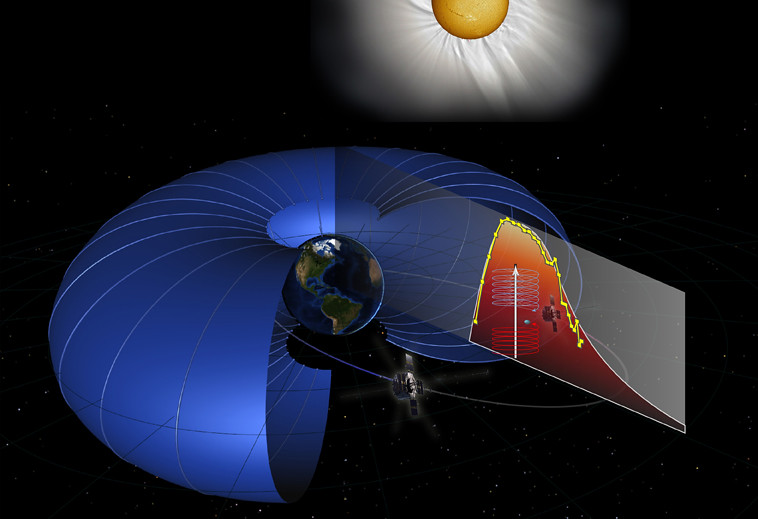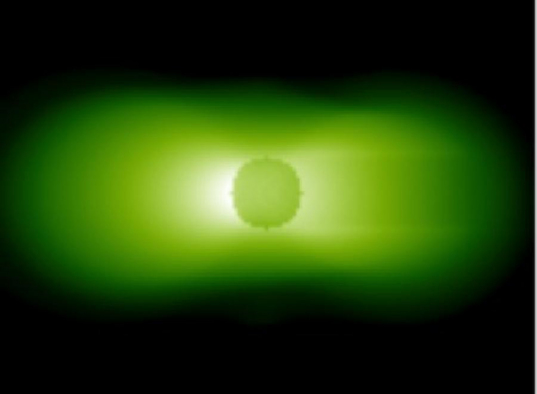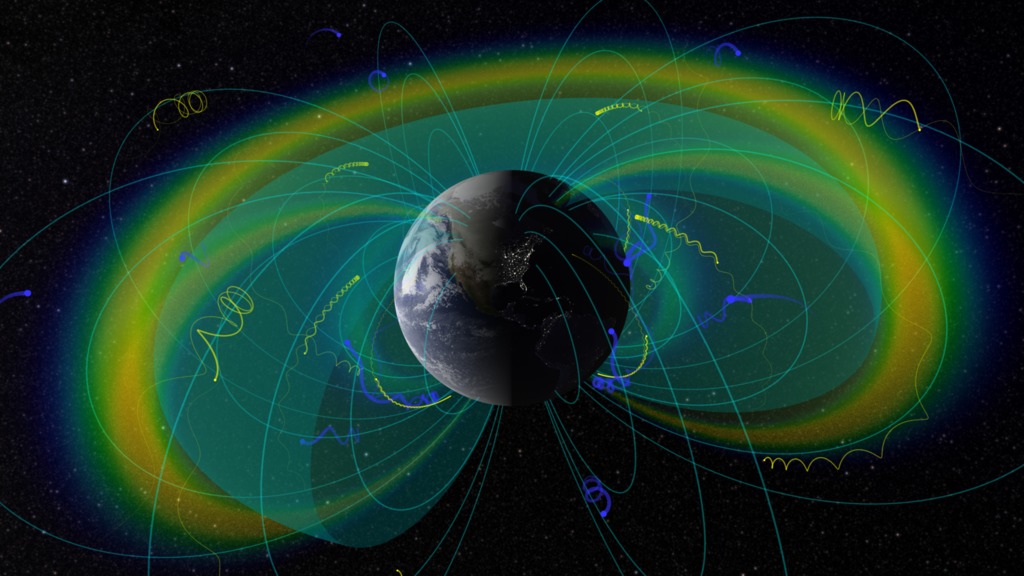NASA | JHU-APL | Van Allen Probes (RBSP) | 2012 Dec 05
Just 96 days since their launch, NASA’s twin Van Allen Probes have already provided new insights into the structure and behavior of the radiation belts that surround Earth, giving scientists a clearer understanding about the fundamental physical properties of these regions more than half a century after their discovery.This high-cadence sampling data, taken by the Electric and Magnetic Field Instrument
Suite and Integrated Science (EMFISIS) instruments on NASA's Van Allen Probes right
after launch, reveals a strong correlation between chorus waves (the bird-like sounds
recorded by EMFISIS) and disturbance storm time (DST), a value used to measure
geomagnetic activity during magnetic storms. A drop in DST (top) can be seen to
correlate with an increase in chorus activity (more red, orange, and yellow) in the
bottom plot. This correlation may be central to the association of strong particle
acceleration with some magnetic storms; scientists are working now to learn more
about the exact processes at work. (Credit: University of Iowa/NASA)
In a press conference on Tuesday, Dec. 4 at the American Geophysical Union’s 2012 Fall Meeting in San Francisco, members of the Van Allen Probes science team discussed current findings made in unlocking the mysteries of the radiation belts. These two donut-shaped regions of high-energy and hazardous particles – named for their discoverer and the mission’s namesake, American physicist James Van Allen of the University of Iowa – are created by our planet’s magnetosphere, and can harm space technologies such as satellites, as well as affect human space travel.
Throughout the brief early life of the two-year mission, energetic events and ejections of plasma from the sun caused dramatic changes in the radiation belts that, for the first time, were observed by twin spacecraft within the belts. “The sun has been a driver of these systems more than we had any right to expect,” says Daniel Baker, Principal Investigator, Van Allen Probes Relativistic Electron Proton Telescope (REPT, which is part of the Energetic Particle, Composition, and Thermal Plasma Suite, or ECT), from the Laboratory for Atmospheric and Space Physics (LASP) at the University of Colorado, Boulder. “We’re seeing brand new features we hadn’t expected.”
The twin probes, built and managed for NASA by the Johns Hopkins University Applied Physics Laboratory (APL) in Laurel, Md., contain identical sets of five instrument suites. These suites have confirmed previous hypotheses about the belts’ behavior, while also revealing that the belts are a far more dynamic and changing environment than previously thought. “We expected to see a fairly placid radiation belt system,” Baker says. “Instead, we see that the belts have been extraordinarily active and dynamic during the first few weeks. We’re looking in the right places at the right times.”
Our planet’s magnetosphere captures particles from the billions of tons of plasma ejected by the sun and from other sources; fields and waves of electricity and magnetism control and guide the charged particles within the belts, with the particles “surfing” on the waves, losing or gaining large amounts of energy along the way as they enter and leave the region. Measurements made by instruments like the Electric Fields and Waves Suite (EFW) and the Electric and Magnetic Field Instrument Suite and Integrated Science (EMFISIS) are helping scientists understand how those fields and waves affect the particles. “The electric field and magnetic field measurements on the Van Allen Probes are the best ever made in the radiation belts,” says the University of Iowa’s Craig Kletzing, Principal Investigator for EMFISIS. “For the first time, we’ve been able to see how long intense low frequency electric fields and waves at the edge of the radiation belts can last – sometimes for over five hours during geomagnetic storms. Before, it was like we could see a car zoom past, but not see anything about the details. Now, we can see what color the upholstery is.”
The inner belt, where many satellites must operate, is home to the most hazardous and energized particles, mostly protons. “A staggering number of the spacecraft we rely upon daily have to spend a part of their orbit in the harshest area of Earth’s radiation environment,” says Joseph Mazur of the Aerospace Corporation, Principal Investigator of the probes’ Relativistic Proton Spectrometer (RPS). The Van Allen Probes are providing researchers with detailed views of how the populations of those particles vary with altitude, which should help engineers more effectively protect satellites. “This is the first time we’ve been able to measure the high energy particles in the heart of the radiation belts,” Mazur said. “We’re able to measure at the one billion electron volt level; particles at that energy are virtually impossible to shield against. They will easily penetrate half-inch thick aluminum plate.” Particles at that energy level are known to cause a range of damages to spacecraft, from physical degradation to instrument malfunctions and false readings.
“NASA built these spacecraft to be super tough, and thank goodness we did,” says APL’s Nicky Fox, Van Allen Probes deputy project scientist. “The instruments are seeing the exact sorts of damaging effects we designed the spacecraft to survive.”










